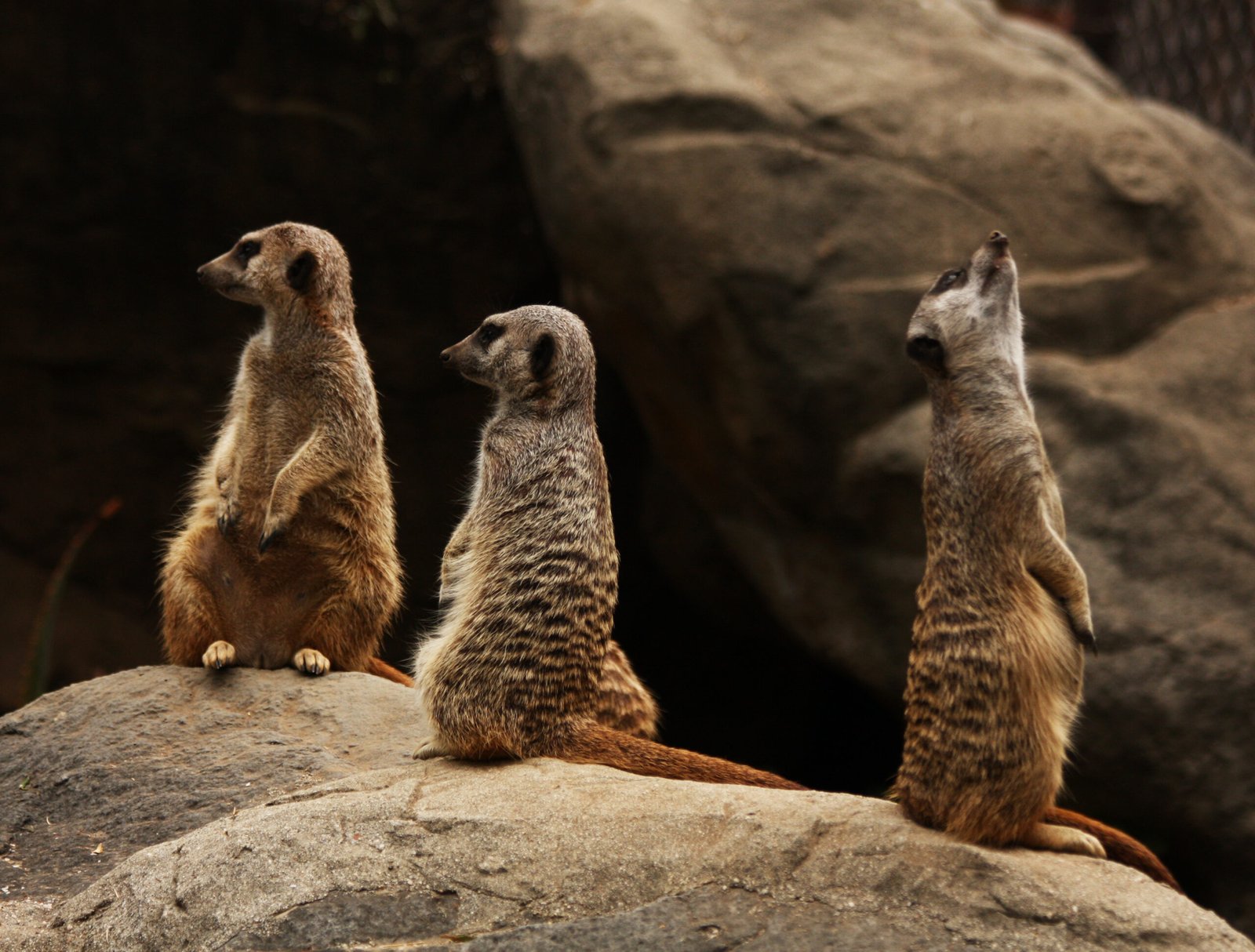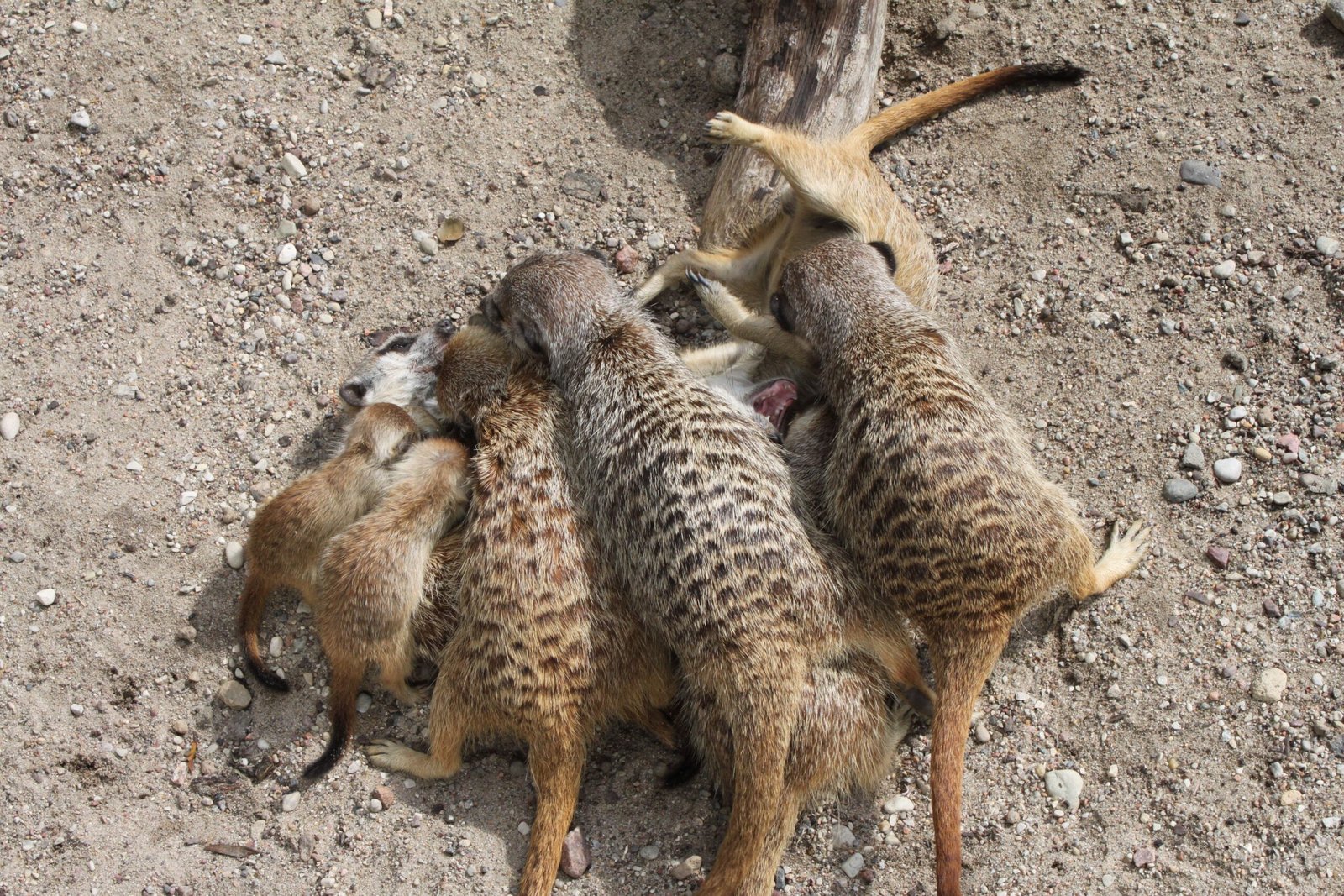Imagine a tiny, fearless mammal standing tall on its hind legs, scanning the parched African desert for danger, then suddenly darting down to snatch a venomous scorpion. Now picture it turning to its pup, not to shield it from harm, but to hand over the deadly creature—teaching, not protecting. This is the astonishing world of meerkats, where survival isn’t just instinct, but a lesson passed on with patience and precision. The remarkable way meerkats train their young to hunt scorpions is as much a story of family bonds as it is about raw survival, and it’s a dazzling example of animal intelligence that might just change how you think about “wild” parenting.
The Harsh Reality of the Kalahari Desert
The Kalahari Desert in southern Africa is a place where only the toughest survive. With blistering heat by day and chilling cold by night, life here is a constant struggle. Water is scarce, and food is often difficult to find. Meerkats, with their slender bodies and sharp eyes, have managed to carve out a life in this unforgiving environment. Their days are spent foraging for insects, lizards, and, most impressively, scorpions. The desert is both their home and their classroom, pushing them to adapt in extraordinary ways. Every day is a lesson in resilience, and young meerkats must learn quickly if they are to thrive.
Family Above All: The Meerkat Social Structure

Meerkats are not solitary creatures; they live in close-knit groups called mobs or clans that can include up to 50 individuals. Within these families, cooperation and communication are vital. Each meerkat has a role, from sentinels who stand guard to babysitters who watch over the pups. This strong social structure is the backbone of their survival strategy. Adults share the burden of raising the young, creating an environment where learning and teaching are part of daily life. It’s not just the parents who guide the pups—older siblings and other group members play their part, too.
Why Scorpions? The Perilous Prey
Scorpions are more than just a meal for meerkats—they’re a rite of passage. These venomous arachnids are abundant in the Kalahari, making them a crucial food source. But they’re also dangerous, armed with powerful stings that can kill a small animal. Meerkats have developed a remarkable resistance to scorpion venom, allowing them to hunt these formidable foes with less risk. Yet, for pups, the challenge remains real. Learning to catch and eat a scorpion safely is a delicate dance between courage and caution, and it’s a skill that must be taught, not just inherited.
Step-by-Step: The Art of Teaching
Meerkat adults don’t just let their pups figure things out alone. Instead, they use a step-by-step approach to teaching that rivals human parenting in its care and detail. At first, adults bring dead or incapacitated scorpions to the pups, allowing them to handle and taste their prey without danger. As the young grow bolder, the adults present live but disabled scorpions—perhaps with the sting removed. Finally, the pups are given fully active scorpions, watched closely by adults ready to intervene if things go wrong. This gradual process is both nurturing and practical, giving pups the confidence and skills they need to survive.
Communication: The Secret Tool
How do meerkats know when a pup is ready for the next lesson? The answer lies in their sophisticated communication. Adults use a variety of vocalizations and body language to signal danger, excitement, or encouragement. Pups, in turn, beg for food with distinctive calls, letting adults know when they’re hungry or interested. Researchers have found that adults respond differently to pups of different ages, tailoring their teaching methods accordingly. This level of communication is rare in the animal kingdom and shows just how attuned meerkats are to each other’s needs.
Learning Through Play and Practice

For meerkat pups, learning isn’t all about serious lessons—it’s about play, too. Young meerkats wrestle with each other, pounce on imaginary prey, and chase after insects. These playful behaviors aren’t just fun; they’re essential for developing hunting skills and building muscle coordination. When a pup finally faces a real scorpion, it draws on countless hours of practice. Play also strengthens social bonds, teaching pups how to cooperate and compete in equal measure. In the wild, play is survival in disguise.
Risk and Reward: The Dangers of Inexperience

Hunting scorpions is a dangerous business, and not every lesson goes smoothly. Pups sometimes get stung, and while most survive thanks to their partial venom resistance, the experience is a harsh teacher. Adults remain vigilant during these lessons, ready to intervene if a pup is in real trouble. The risk is real, but so is the reward—pups who master scorpion hunting become vital members of the group, able to contribute food and ensure the clan’s survival. Every sting is a step toward independence.
Scientific Insights: How Researchers Uncovered the Truth
The story of meerkat teaching did not come easily to light. For years, scientists observed meerkat groups, meticulously documenting their behaviors and interactions. By analyzing hours of footage, researchers noticed the clear pattern of teaching: adults modified their behavior to suit the age and skill of the pups. This discovery was groundbreaking, as true teaching in the animal kingdom is rare and usually associated with species like humans, dolphins, and some birds. Meerkats earned their place among the most intelligent and socially complex animals on Earth.
The Power of Adaptation
Meerkats’ ability to teach their young is a testament to the power of adaptation. In the harsh Kalahari, only those who can learn quickly and well will survive. By passing on knowledge through active teaching, meerkats ensure that each new generation is better prepared for the challenges ahead. This adaptability isn’t just about catching scorpions—it’s about reading the environment, understanding group dynamics, and responding to new threats. Every lesson learned is a step toward greater resilience.
Looking Beyond Meerkats: What Can We Learn?
The meerkat’s approach to teaching reminds us that intelligence and empathy are not just human traits. Watching these animals patiently guide their young sparks a sense of wonder and respect for nature’s ingenuity. It challenges us to reconsider what we know about animal minds and the bonds that unite families—even when survival is at stake. The world of meerkats is a living classroom, and their lessons have the power to inspire our own curiosity and compassion.



